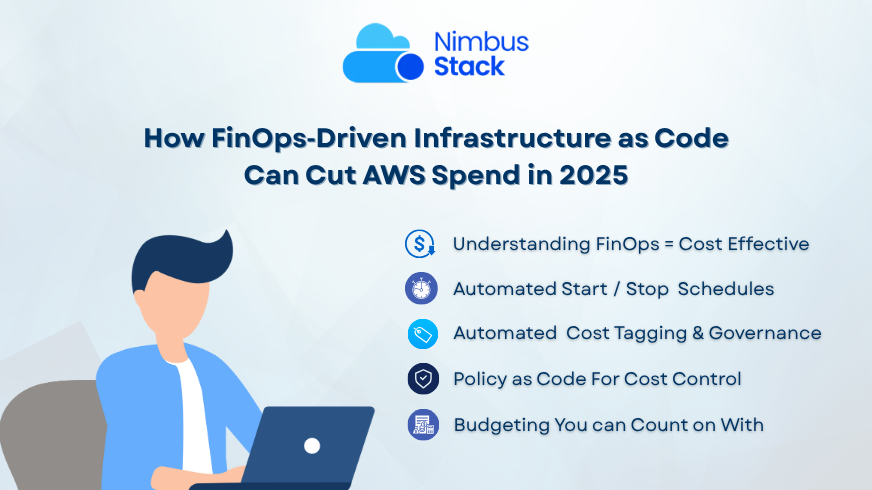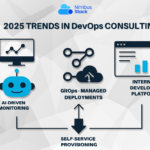In 2025, companies are feeling more pressure than ever to control what they spend on the cloud while still keeping services quick and flexible. Since Amazon Web Services still rules the cloud space, many teams find their monthly AWS bills climbing out of control. The real fix sits where FinOps meets Infrastructure as Code: this smart blend lets engineers trim costs without slowing down new ideas or performance.
Understanding FinOps and Its Role in Cloud Cost Optimization
FinOps, short for Financial Operations, pulls together budget experts, ops staff, and engineers so everyone watches and controls cloud spending. Unlike old IT budgets that few people outside finance ever see or touch, FinOps spreads cost responsibility across the whole team.
When teams run on FinOps, they can see spending as it happens, predict future bills with greater confidence, and line up resources with real use and company goals. Those benefits shine brightest in AWS accounts, because almost every service counts usage in real time and charges by the hour or gigabyte.
Infrastructure as Code: The Backbone of Cloud Efficiency
Infrastructure as Code, or IaC, means writing code files to build and manage servers, networks, and storage instead of fiddling with point-and-click dashboards. Tools such as Terraform, AWS CloudFormation, and Pulumi let DevOps crews spin up and tear down AWS resources in bulk, cutting downtime, mistakes, and surprise costs.
When you mix FinOps with Infrastructure as Code (IaC), you get a smart way to keep cloud bills in check. Coding the setup means teams skip the manual clicks, cut down on stray resources, and build cost-friendly architectures from day one.
Why You Need a FinOps-Focused IaC Playbook by 2025
As companies expand their AWS environments in 2025, strong spending guardrails will be essential. Cloud apps, AI processing, and containers are multiplying fast, leaving manual cost tracking nearly impossible. That gap is exactly where a FinOps-first IaC approach shines.
With FinOps in the mix, finance and dev teams can draft infrastructure blueprints that think about cost from the start. IaC then keeps those blueprints under version control, tests them, and pushes the same setup to every AWS account and region. Because of that teamwork, budget limits get woven into every step of building and running the infrastructure.
Big Ways FinOps-Driven IaC Saves on AWS Bills
So, how does mixing FinOps with IaC actually trim AWS spending? Check out these key benefits.
1. Automated Cost Tagging and Governance
Visibility is one of FinOps core goals. IaC makes it simple to require cost tags on every AWS resource. Labels like “cost center,” “owner,” and “environment” get slapped on automatically, letting you track expenses down to the smallest piece.
That clear view lets FinOps folks see which or what project is burning the most AWS juice, so they can talk facts, make smart choices, and hold the right people accountable.
2. Resource Rightsizing with IaC Templates
A popular headache in AWS is over-provisioning giving workloads way more power than they really need. FinOps teams say to check on usage often and shrink resources back to what a job really uses.
When those ideas live in an IaC template, crews can spin up EC2 instances, RDS databases, and other services that already fit the workload. The same template gets a quick tweak later, so costs stay lean as traffic changes.
3. Automated Start/Stop Schedules for Non-Production Environments
Dev, QA, and staging stacks usually hum all night even though nobody looks at them until the sun is up. With FinOps rules in mind, IaC can wire up Lambda jobs or CloudWatch Events that tuck those resources in after hours.
By shutting them down when they’re truly idle, teams can pocket savings of 50 to 60 percent on non-production workloads.
4. Policy-as-Code for Cost Control
IaC tools now play nice with policy-as-code engines like Open Policy Agent or Sentinel, letting you bake FinOps guardrails right into the build. That way, nobody can accidentally launch a pricey instance type or a service that skips the tagging road map.
When you weave FinOps rules straight into your CI/CD pipeline using Infrastructure as Code (IaC), watching costs shifts from being something you scramble to do after the fact to something you catch early.
5. Budgeting You Can Count On with Reusable Modules
Reusable IaC modules bring order to AWS setups. Because every module comes with a price tag the team already knows, people can predict spending with way less guesswork. That lets FinOps sketch out different deployment what-ifs and see how each one would hit the wallet before anything gets built.
Being able to forecast like this is what turns rough ideas into rock-solid budgets and keeps those painful end-of-the-month bill shocks from popping up.
Real-World Example: How FinOps + IaC Snagged $100K in AWS Savings
A fast-growing SaaS outfit moved to AWS and blew up almost overnight. Almost as soon as they went live, the cloud bills started climbing way faster than the number of users. By planting FinOps habits, the crew spotted EC2 instances and RDS clusters that were barely doing anything. Then they rewrote the whole setup in Terraform, adding smart tags, bedtime schedules, and correctly sized instances.
In the next six months they trimmed their AWS tab by $100,000 ku-ching without losing speed, all thanks to letting FinOps drive the code.
Challenges and Best Practices
Dragging FinOps and IaC into the same workflow can get messy, especially in big companies. Start with these tips:
Educate Teams: Make sure engineers know what FinOps is and why keeping AWS costs in check matters to everyone.
Centralize IaC Libraries: Keep a single set of go-to IaC modules that follow FinOps rules.
Use Multi-Account Strategies: Split AWS accounts by team or project so costs and usage stay clear.
Continuously Monitor: Link AWS Cost Explorer, CloudWatch, and any favorite tool to watch changes live.
Automate Remediation: Write IaC rules with AWS Config or Lambda that fix non-compliant resources on the spot.
The Future: AI + FinOps + IaC
Soon, adding AI to FinOps and IaC will take cost-saving to the next level. Smart models will spot how teams use AWS, then suggest or even push live changes to tighten spending. This kind of instant reaction will make FinOps playbooks sharper and cloud bills lighter.
Conclusion
By 2025, AWS environments will be tangled and costly if companies sit on their hands. Pairing a FinOps mindset with IaC lets teams scale, automate, and stay ahead of surprises on the bill.
When finance and code speak the same language, cost-smart cloud setups are built from the first line of script. From scrappy start-ups to large enterprises, this mix trims AWS costs and raises a culture focused on smart spending and solid engineering.


